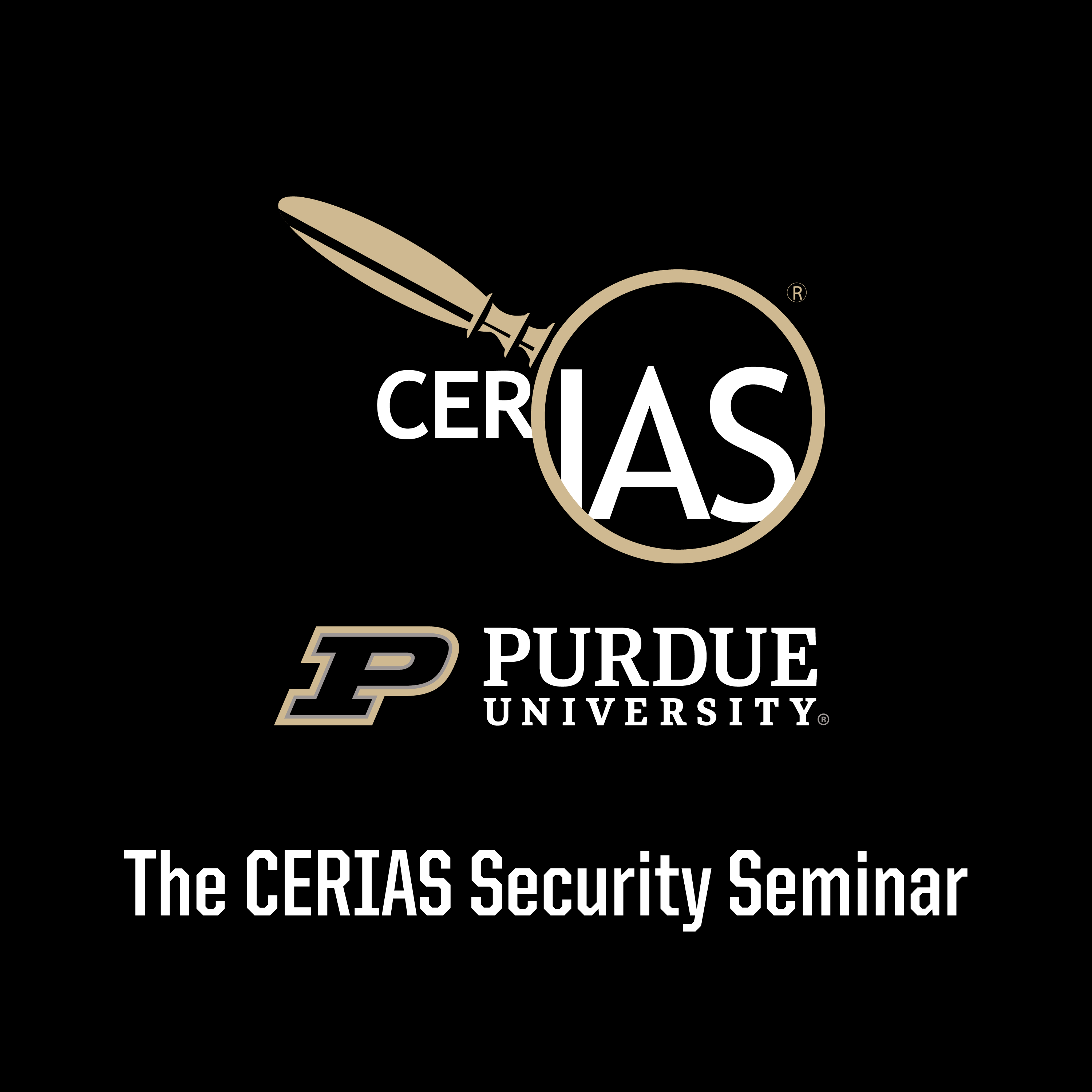1683 episodes


How Cybersecurity relates to various fields of business/ industries – how it works in these fields, different risks and vulnerabilities that are out there, which explains why manufacturing cybersecurity into the design of a product or service is so imperative. In companies today Budget Managers and Business Managers and Engineers are making decisions on their cybersecurity options without including cybersecurity experts in that process. Without the input from the cybersecurity experts, some cybersecurity decisions are made with cost savings as the primary goal, and cutting corners in cybersecurity can actually be a bad idea.
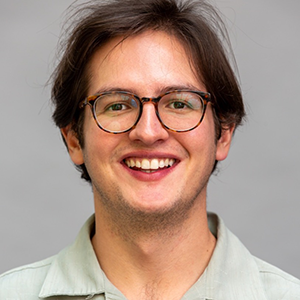

Reputation systems are crucial to online platforms' health. They are prevalent across online marketplaces and social media platforms either visibly (e.g., as star ratings and badges) or invisibly as signals that feed into recommendation engines. In theory, good behavior (e.g., honest, accurate, high-quality) begets high reputation, while poor behavior is deterred and pushed off the platform. In this talk, I will discuss how these systems seem to fulfill this mission only coarsely. On one platform, we were able to predict 2 times more suspensions than the reputation system in place using other public signals. On another study, we found that users with high reputation signals were suspended at significantly lower rates (up to 3 times less) for the same number of offenses and behavior as regular users, which suggests they may be impairing content moderation efforts. I will provide some hypotheses to explain these results and offer preliminary findings from current work. About the speaker: Alejandro is a 5th year PhD student at Carnegie Mellon University in Societal Computing, advised by Prof. Nicolas Christin. He is interested in measuring social influence in online communities adjacent to underground economies. His recent work focuses on how reputation is leveraged in anonymous marketplaces, p2p marketplaces, and cryptocurrency communities. He is a recipient of a CMU Cylab Presidential Fellowship, as well as a IEEE S&P Distinguished Paper Award. Prior to CMU, he obtained a B.S. from The Pennsylvania State University, where he worked with Prof. Peng Liu and Prof. Xinyu Xing on a variety of systems security projects. A Paraguayan native, Alejandro has been invited to talk about his work at the Paraguayan Central Bank and the Paraguayan National Police.
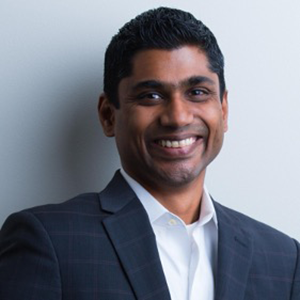

The frequency, materiality, and impact of cybersecurity incidents is at a level that the business world has never seen before. CISOs are at the forefront of this. The speaker has experience with developing cybersecurity products and managing IT infrastructure and security from startup to massive scale. The talk will go through the roles, responsibilities, rewards, and perils, of being a CISO in a modern enterprise software company in these turbulent times. We will explore some hard problems that need to be solved for the good guys to continue winning. About the speaker: Sanket Naik is the founder and CEO at Palosade, building modern AI-powered cyber threatintelligence solutions to defend companies from AI-weaponized adversaries. Heenjoys giving back to startups through investing and advisory roles.Before Palosade, he was the SVP of engineering for Coupa. In this role, he built the cloud and cybersecurity organization, over 12 years, from the ground up through an initial public offering followed by significant global growth. He has also held engineering roles at HP and Qualys.Sanket holds a BS in electronics engineering from the University of Mumbai and an MS inCS from Purdue University with research at the multi-disciplinary CERIAS cybersecurity center.


In the realm of risk, cybersecurity is a fairly new idea. Most people currently entering the cybersecurity profession do not remember a time when cybersecurity was not a major concern. Yet at the time of this writing, reliance on computers to run business operations is less than a century old. Prior to this time, operational risk was more concerned with natural disasters than man-made ones. Fraud and staff mistakes are also part of operational risk, so as dependency on computers steadily increased from the 1960s through the 1980s, a then-new joke surfaced: To err is human, but if you really want to screw things up, use a computer.Foundational technology risk management concepts have been in place since the 1970s, but the tuning and the application of these concepts to cybersecurity were slow to evolve. Yet there is no doubt that cybersecurity risk management tools and techniques have continuously improved.. Although the consequences of cybersecurity incidents have become dramatically more profound over the decades, available controls have also become more comprehensive, more ubiquitous, and more effective. This seminar is intended to make the fundamentals of cybersecurity risk management visible to those who are contributing to it, and comprehensible to those looking in from the outside. Like any effort to increasing visibility, increasing transparency in cybersecurity requires clearing out some clouds first. That is, in the tradition of Spaf's recent book on the topic*, busting some cybersecurity management myths that currently cloud management thinking about cybersecurity and replacing them with risk management methodologies that work.*Spafford, G., Metcalf, L. and Dykstra, J. (2022). Cybersecurity Myths and Misconceptions, Avoiding the Hazards and Pitfalls that Derail Us. Addison-Wesley. About the speaker: Dr. Jennifer L. Bayuk, Ph.D. is experienced in a wide variety of cybersecurity positions, including Wall Street Chief Information Security Officer, Global Bank Operational Risk Management, Financial Services Internal Audit, Big 4 Information Systems Risk Management, Bell Labs Security Software Engineer, Risk Management Software Company Founder, and Expert Witness.Author of multiple textbooks and articles on a variety of cybersecurity topics and is a frequent contributor to Cybersecurity Conferences, Boards, Committees, and educational forums.Jennifer has created curriculum on numerous information security, cybersecurity, and technology risk topics for conferences, seminars, corporate training, and graduate-level programs. Adjunct Professor at Quinnipiac University, Kean University, and Stevens Institute of Technology.She has a BS in Computer Science and Philosophy from Rutgers University, MS (1992) in Computer Science and a PhD (2012) in Systems Engineering from Stevens Institute of Technology.


We must be methodical and intentional about how Artificial Intelligence (AI) systems are designed, developed, deployed, and operationalized, particularly in critical infrastructure contexts. CISA, the UK-NCSC, and our partners advocate a secure by design approach where security is a core requirement and integral to the development of AI systems from the outset, and throughout their lifecycle, to build wider trust that AI is safe and secure to use. This talk will focus on challenges and opportunities in the secure deployment, operation, and maintenance of AI software systems. The talk will use publications on the practice of coordinated vulnerability disclosure as a motivating example. About the speaker: Dr. Jonathan Spring is a cybersecurity specialist in the Cybersecurity and Infrastructure Security Agency. Working within the Cybersecurity Division's Vulnerability Management Office, his area of focus includes researching and producing reliable evidence to support effective cybersecurity policies at various levels of vulnerability management, machine learning, and threat intelligence.Prior to joining CISA, Jonathan held positions in the Computer Emergency Response Team (CERT) division of the Software Engineering Institute (SEI) at Carnegie Mellon University and was adjunct professor at the University of Pittsburgh's School of Information Sciences.


Tensor decomposition is a powerful unsupervised machine learning method used to extract hidden patterns from large datasets. This presentation aims to illuminate the extensive applications and capabilities of tensors within the realm of cybersecurity. We offer a comprehensive overview by encapsulating a diverse array of capabilities, showcasing the cutting-edge employment of tensors in the detection of network and power grid anomalies,identification of SPAM e-mails, mitigation of credit card fraud, and detection of malware. Additionally, we delve into the utility of tensors for classifying malware families, pinpointing novel forms of malware, analyzing user behavior,and utilizing tensors for data privacy through federated learning techniques. About the speaker: Maksim E. Eren is an early career scientist in A-4, Los Alamos National Laboratory (LANL) Advance Research in Cyber Systems division. He graduated Summa Cum Laude with a Computer Science Bachelor's at University of Maryland Baltimore County (UMBC) in 2020 and Master's in 2022. He is currently pursuing his Ph.D. at UMBC's DREAM Lab, and he is a Scholarship for Service CyberCorps alumnus. His interdisciplinary research interests lie at the intersection of machine learning and cybersecurity, with a concentration in tensor decomposition. His tensor decomposition-based research projects include large-scale malware detection and characterization, cyber anomaly detection,data privacy, text mining, and high performance computing. Maksim has developed and published state-of-the-art solutions in anomaly detection and malware characterization. He has also worked on various other machine learning research projects such as detecting malicious hidden code, adversarial analysis of malware classifiers, and federated learning. At LANL, Maksim was a member of the 2021 R&D 100 winning project SmartTensors, where he has released a fast tensor decomposition and anomaly detection software, contributed to the design and development of various other tensor decomposition libraries, and developed state-of-the-art text mining tools.
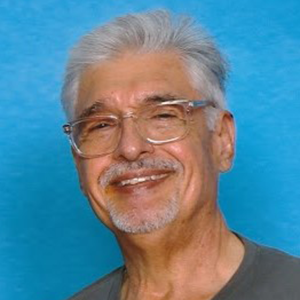

In the course of the talk I'll discuss current authentication challenges, the looming problem with cracking public key encryption, and short and medium term recommendations to help folks stay secure. About the speaker: Bill helps clients achieve an effective information security posture spanning endpoints, networks, servers, cloud, and the Internet of Things. This involves technology, policy, and procedures, and impacts acquisition/development through deployment, operations, maintenance, and replacement or retirement. During his five-decade IT career, Bill has worked as an application programmer with the John Hancock Insurance company; an OS developer, tester, and planner with IBM; a research director and manager at Gartner for the Information Security Strategies service and the Application Integration and Middleware service, and served as CTO of Waveset, an identity management vendor acquired by Sun. At Trend Micro, Bill provided research and analysis of the current state and future trends in information security. He participates in the ISO/IEC 62443 standards body and the CISA ICSJWG on ICT security. He runs his own consulting business providing information security, disaster recovery, identity management, and enterprise solution architecture services. Bill has over 180 publications and has spoken at numerous events worldwide. Bill attended MIT, majoring in Mathematics. He is a member of CT InfraGard and ISACA.
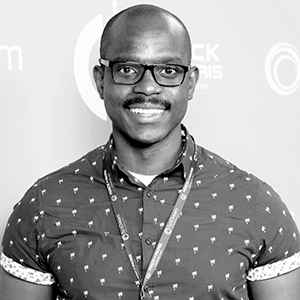

Exploitations in cybersecurity continue to increase in sophistication and prevalence. The purpose of this talk is to discuss how the evolution of malware has led to increased exploitation and then discuss ways to enhance the cybersecurity paradigm. About the speaker: Solomon Sonya (@0xSolomonSonya) is a Computer Science Graduate Student at Purdue University. He earned his undergraduate degree in Computer Science and Master's Degrees in Computer Science, Information Systems Engineering, and Operational Art and Strategy. Solomon routinely develops new cyber security tools and presents his research, leads workshops, and delivers keynote addresses at cyber security conferences around the world. Prior to attending Purdue, Solomon was a Distinguished Computer Science Instructor at the United States Air Force Academy and Research Scholar at the University of Southern California, Los Angeles. Solomon's previous keynote and conference engagements include: DEFCON and BlackHat USA in Las Vegas, NV, SecTor Canada, Hack in Paris and LeHack, France, HackCon Norway, ICSIS – Toronto, ICORES Italy, BruCon Belgium, CyberCentral – Prague and Slovakia, Hack.Lu Luxembourg, Shmoocon DC, BotConf - France, CyberSecuritySummit Texas, SANS Digital Forensics Summit, DerbyCon Kentucky, SkyDogCon Tennessee, HackerHalted Georgia, Day-Con Ohio, TakeDownCon Connecticut, Maryland, and Alabama, and AFCEA – Colorado Springs and Indianapolis.


Evil has been lurking in the Internet since its inception. The IETF recognized this, releasing RFC 3514 on the evil bit. Unfortunately it isn't widely adopted, so we have to find our evil in other ways. Grepping is a time honored way of finding needles in haystacks, so let's see how much evil we can find in the DNS haystack...And can we answer the question of "Why is it so easy?" About the speaker: Leigh Metcalf is a Senior Network Security Research Analyst at the Carnegie Mellon University Software Engineering Institute's cybersecurity (CERT) division. CERT is composed of a diverse group of researchers, software engineers, and security analysts who are developing cutting-edge information and training to improve the practice of cybersecurity. Before joining CERT, Leigh spent more than 10 years in industry working as a systems engineer, architect, and security specialist.


The field of cybersecurity is constantly evolving, and Device Fingerprinting (DFP) has emerged as a crucial technique for identifying network devices based on their unique traffic data.This is necessary to protect against sophisticated cyber-attacks. However,automating device classification is complex, as it involves a vast and diverse feature space derived from various network layers, such as application,transport, and physical. With the advances in machine learning and deep learning, DFP has become more accurate and adaptable, integrating multi-layered data and emphasizing the need to balance robust security measures. The study of DFP, especially in the context of emerging protocols like HTTP/2 and HTTP/3,remains a critical area of research in cybersecurity. This talk focuses on enhancing real-time threat detection while navigating the challenges of scalability. About the speaker: Dr. Sandhya Aneja is a researcher, inventor, and computer scientist with a strong passion for teaching. She is an Assistant Professor at Marist College in Poughkeepsie, NY,and was a Visiting Research Scholar at the Department of Computer Science, Purdue University. She has over 15 years of experience teaching computer science to undergraduate and graduate students at the University of Delhi and the University of Brunei.As a researcher, she contributed to developing a mobile application to facilitate the matching of interests on available mobile devices and allow exchanging of messages and files. The application allows broadcasting names and a limited number of keywords representing users' interests without any connection in a nearby region. The broadcasting region creates a mobile wireless network limited by the Wi-Fi region that is around 200 meters. She also received a US Patent on this technology.As a computer scientist, she has received project funding from the University of Delhi as PI and the Universityof Brunei as co-PI. She has extensively worked on Brunei government-funded projects with IBM Researchers. She is also a contributor to Sandia and DARPA-funded projects at Purdue University.
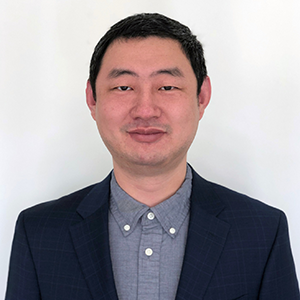

Advanced Persistent Threat (APT) attacks are increasingly targeting modern factory floors. Recovery from a cyberattack is a complex task that involves identifying the root causes of the attack in order to thoroughly cleanse the compromised systems and remedy all vulnerabilities. As a result, the provenance analysis, which can correlate individual attack footprints and thus "connect the dots", is very much desired. Provenance analysis has been well studied in traditional IT systems, yet the OS-level attack model, prior work employs, cannot effectively capture application semantics in physical control systems. Recent efforts have been made to develop custom provenance models that uniquely represent physical attacks in cyber-physical systems. Nevertheless, existing techniques still fall short due to their unreliable semantic recovery, inability to reconstruct process contexts, and lack of cross-domain causality tracking. In this talk, we present ICSTracker, which aims to enable provenance analysis in the new setting of industrial IoT. To recover the physical semantics of controller routines, we utilize data mining to identify function call sequences that align with specific physical actions. To establish the process contexts, we resort to the data access patterns in controller code to discover and keep track of critical state variables that are shared among multiple iterations of control logic. To uncover the methods attackers employ in exploiting digital vulnerabilities to cause physical damage, we perform a cross-domain causality analysis, associating controller operations with OS-level events through their mutual access to shared digital assets. We have implemented and tested ICSTracker in a FischerTechnic testbed. Our preliminary results are promising, demonstrating that ICSTracker can precisely capture cross-domain cyber-physical attacks in a semantics and context-aware fashion. About the speaker: Mu Zhang is an Assistant Professor with the Kahlert School of Computing at the University of Utah. Zhang works at the unique intersection between systems security and cyber-physical systems. He is the lead PI of the DARPA HACCS project Semantics-Aware Discovery of Advanced Persistent Threats in Cyber-Physical Systems, which aims to detect advanced attacks in CPS settings. He has also been key personnel on the NSF CPS Frontiers project, Software Defined Control for Smart Manufacturing Systems, and has led the technical effort to develop a security vetting system for controller programs. Zhang has extensively published in top-tier security venues (S&P, CCS, NDSS), and received an ACM SIGSOFT Distinguished Paper Award at ISSTA 2023, an ACM SIGPLAN Distinguished Paper Award at OOPSLA 2019, and a Best Paper Honorable Mention at CCS 2022.
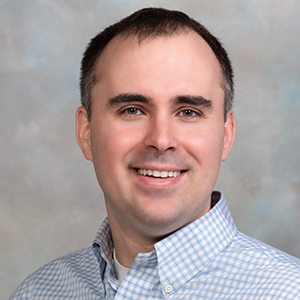

This is a hybrid event. Students are encouraged to attend in person: STEW G52(Suite 050B) Commercial or defense systems are often developed first to meet a mission or customer need. Security of many of these systems is often developed at a component level by each components product team. The product teams often maintain robust security for their component within the system, but security gaps begin to form when the complete system is assembled. Adversaries will seek to exploit these gaps in the overall system design as they look for the path of least resistance to achieve their goals. These adversaries do not limit themselves to one exploitation domain and will often pivot across domains in their execution of an attack. To guard against these multi-domain threats, we as security practitioners and researchers need to work together to adjust our world view on the larger system of system security challenge that we face. This presentation begins the process of enumerating some of these gaps, how gaps came into existence, and provides potential research avenues to address them. About the speaker: Dr. Robert Denz serves as the Director of the Secure and Resilient Systems group at Riverside Research. In this role, he leads a team of researchers who ensure software provenance, security, reliability, and resilience in systems. To achieve these objectives, the Secure and Resilient Systems group conducts innovative research in formal methods, AI-driven secure waveform design, and secure operating system implementations for the Department of Defense (DoD) and Intelligence Community (IC).Dr. Denz has over 15 years of experience working on and leading cybersecurity and anti-tamper research programs for DARPA and the DoD. He was recently the Principal Investigator for DARPA Dispersed Computing, where he oversaw a multi-disciplinary team that delivered distributed resilient mesh routing protocols to the tactical edge. Dr. Denz also served as a research lead for DARPA Mission Resilient Clouds (MRC), contributed to the DARPA Clean-slate design of Resilient, Adaptive Secure Hosts (CRASH), and was an original designer of the Air Force Cross-Domain Access SecureView Hypervisor. Through these efforts, he gained extensive knowledge of x86 processor internals and secure operating systems. Dr. Denz received his PhD in secure hypervisor and kernel design from the Thayer School of Engineering at Dartmouth College in 2016.


The challenge of building a security program is that there are too many things you could be doing, and that creates a challenge for security leaders to decide on which things they should do next.All too often companies pivot from fighting one fire to another fire. They end up cobbling together a security program with duct tape, bailing wire, and a handful of solutions implemented as a reaction to our own incidents and major headlines about other companies' breaches. How should a CISO evaluate building their security program?In this talk, I will be exploring a mental model that CISOs can use - that I used in my 20 years as a CISO - to evaluate the state of their security program, and to identify where there are gaps in coverage. At a high level, the framework is four dimensional, covering width (asset coverage), height (control comprehensiveness), depth (risk context), and time (maturity continuity). I will use case studies to highlight ways the security programs often fail on one of these axes, as a means for participants to connect the programs they work on to the shortcomings others have already experienced.Most ways to evaluate a security program become frameworks with an overly strong focus on detail, but which lose the holistic view of the health of a security program, and even the "known unknowns" (we're pretty sure there is a risk, but don't have specifics) become forgotten as the focus narrows to the "known knowns" (we've documented the risk). The "unknown unknowns," of course, almost never get visibility.Combining a mental model for assessing the overall maturity of the program, with a high level risk comparison system (the "Pyramid of Pain") allows a CISO to identify areas for improvement to mitigate risk in the future.Case studies from my time at Akamai will be shared (demonstrating not only how to quickly assess risk, but how to understand risk areas that may take years to mitigate), including the risk areas whose mitigation helped propel Akamai into the security leviathan it is today. About the speaker: Andy Ellis is a seasoned technology and business executive with deep expertise in cybersecurity, managing risk, and leading an inclusive culture. He is the founder and CEO of Duha, a boutique advisory firm focused on providing strategic consulting in the areas of Leadership, Management, Cybersecurity, Technology Risk, and Enterprise Risk Management. He is the author of 1% Leadership, Operating Partner at YL Ventures, Advisory CISO at Orca Security, and is an advisor to cyber security startups. Widely respected across the cybersecurity industry for his pragmatic approach to aligning security and business needs, Andy regularly speaks and writes on cybersecurity, leadership, diversity & inclusion, and decision-making. Ellis previously served as the Chief Security Officer of Akamai Technologies, where he was responsible for the company's cybersecurity strategy, including leading its initial forays into the cybersecurity market. In his twenty-year tenure at Akamai, Andy led the information security organization from a single individual to a 90+ person team, over 40% of whom were women. Andy has received a wide variety of accolades, including the CSO Compass Award, Air Force Commendation Medal, Spirit of Disneyland Award, Wine Spectator Award of Excellence (for The Arlington Inn), the SANS DMA Podcast of the Year (for Cloud Security Reinvented), and was the winner of the Sherman Oaks Galleria Spelling Bee. He was inducted into the CSO Hall of Fame in 2021.After receiving a degree in computer science from MIT, Andy served as an officer in the United States Air Force with the 609th Information Warfare Squadron and the Electronic Systems Center.


This is a hybrid event. Students are encouraged to attend in person: STEW 209. Operational technology (OT) and industrial control systems (ICS) need innovative cybersecurity solutions that go beyond compliance-based security controls in order to be more resilient against increasing cyber threats. This talk describes MITRE Infrastructure Susceptibility Analysis (ISA) that helps ICS/OT organizations to effectively assess risk and prioritize mitigations. About the speaker: As a science and technology leader and strategist, Dr. Wen Masters' career has spanned 30+years with government, academia, R&D centers, and not-for-profit organizations, leading impactful science and technology research and development. Currently, Wen is Vice President for Cyber Technologies at the MITRE Corporation, a not-for-profit organization that manages six federally funded research and development centers with a mission to solve problems for a safer world. In this role, Wen drives MITRE's cybersecurity strategy, champions for MITRE's cybersecurity capabilities, and oversees MITRE's innovation centers with a team of 1,200 professionals developing innovative technologies that address the nation's toughest cyber challenges to deliver capabilities for sponsors and public.Before joining MITRE, Wen was Deputy Director of Research at Georgia Tech Research Institute.She oversaw research in data science, information science, communications, computational science and engineering, quantum information science, and cybersecurity.Prior to Georgia Tech, Wen spent more than two decades as a federal government civilian and a member of the Senior Executive Service of America at the Office of Naval Research (ONR) and the National Science Foundation (NSF). At NSF, she served as the Lead Program Director for the Math Priority Area and a Managing Director for two Mathematical Sciences Institutes. At ONR,she led the Navy's Integrated Science and Technology research and development portfolio in applied mathematics, computer science and engineering, information science, communications,machine learning and artificial intelligence, electronics, and electrical engineering, as well as their applications for war fighting capabilities and national security. For the impact of her efforts, the Navy honored Wen with many awards, including the Distinguished Civilian Service Medal, the highest honorary award given by the Secretary of the Navy. Before her long career in the federal government, Wen worked at the Jet Propulsion Laboratory in Pasadena, California where she was responsible for orbit determination for NASA's deep space exploration missions, including Magellan, Galileo, and Cassini. Wen is a member of the National Academy of Sciences Naval Studies Board, Board of Trustees of the UCLA Institute for Pure and Applied Mathematics, and External Advisory Board of the Texas A&M University Global Cyber Research Institute.
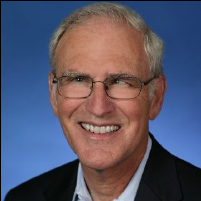

During the last several years, there has been growing concern that the development of quantum computers could undermine the public-key cryptography that is a fundamental pillar of security on the Internet. Recently, the U.S. Government's National Institute of Standards and Technology has released draft standards for post-quantum encryption algorithms that can replace the existing, and potentially vulnerable public-key encryption. But while the future of encryption will depend on new algorithms,there are many other factors that will influence security in the decades to come. In 2022, the National Academies of Sciences, Engineering, and Medicine released a report on "The Future of Encryption" that examines factors including technical aspects of cryptography, societal and policy considerations, and product engineering. The report presents a series of findings that apply broadly, and paints three alternative future scenarios for the future of encryption. This presentation, based largely on the Academies report, will provide researchers, engineers, and policy professionals with context in which to view future developments and concepts for prioritizing future actions. About the speaker: Steve Lipner is the executive director of SAFECode, an industry nonprofit focused on software security assurance. He was previously partner director of software security at Microsoft where he was the creator and long-time leader of the Security Development Lifecycle (SDL) and was responsible for software integrity policies and government security evaluations. Steve also serves as the chair of the U.S.Government's Information Security and Privacy Advisory Board. He has more than a half century of experience in cybersecurity as researcher, engineer, and development manager and is named as coinventor on twelve U.S. patents. He is a member of the National Academy of Engineering and chaired the Academies' Committee on the Future of Encryption. Steve's CV is available at www.stevelipner.org.
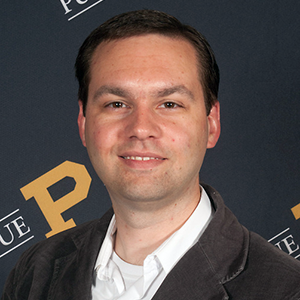

Courtney Falk will discuss his ongoing research into Pod People, the ongoing search-engine optimization spam campaign. This talk combines threat hunting and threat intelligence with real-world applications including insights into how cybercriminals work and how organizations can collaborate. All publicly-accessible indicators collected by this project are published online to contribute to the good of the commons. About the speaker: Dr. Courtney Falk is an information security professional with over fifteen years of experience in the government, academic, and public sectors. He earned his doctorate of philosophy from Purdue University in the interdisciplinary information security program. When Courtney is not researching critical infrastructure for Purdue, he enjoys painting miniature figures and playing tabletop war games.
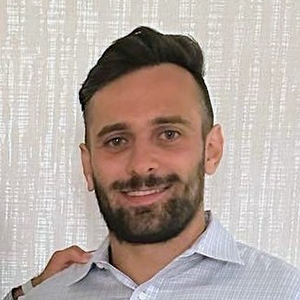

The number of software vulnerabilities found in modern computing systems has been on the rise for some time now. As more and more software is being developed, software testing is increasingly becoming an important part of the software development cycle, with the goal of rooting out any and all vulnerabilities before public release. However, finding software vulnerabilities is not a trivial task, especially in complex software systems with thousands of lines of code and complicated system interactions. Just a single vulnerability making its way into a software product/service can have devastating consequences, if not discovered and patched in good time.Luckily, there is a plethora of available software testing tools and techniques. One such software testing approach is called fuzzing. Fuzzing is an automated program testing technique introduced in the late-1980s, and has become a critical tool in a software tester's toolkit. Fuzzing is based on the simple idea of feeding software lots of mutated inputs and monitoring the program state for any anomalous behavior. Fuzzers have had a long and successful track record of finding software vulnerabilities. This success brought forth new and innovative approaches to improve the overall fuzzing process in all aspects. However, despite its success and widespread use, fuzzing is not a "one size fits all" approach. Software testers still have to tailor their fuzzing methodology to the software under test. Therefore, understanding the inner workings of fuzzers is absolutely vital in order to determine when and how to use them most effectively. About the speaker: Derek Dervishian works as a cybersecurity research engineer at Lockheed Martin - Advanced Technology Laboratories, an advanced applied R&D division of the Lockheed Martin corporation, specializing in cyber, autonomy, data analytics and much more. In this role, Derek has worked on several R&D projects across multiple technical areas, including vulnerability research and binary analysis.Derek graduated from Purdue University with a Bachelor's degree in Computer Engineering in December 2020. Derek is currently pursuing a Master's degree in Computer Science from the Georgia Institute of Technology.


Tracking technologies are proliferating at an increasingly high rate in apps, IoT devices, websites, and in a wide range of files. They are not only impacting privacy in wider and more harmful ways, but they have also extended far beyond the digital world and are also impacting physical safety. Such tools can certainly be very beneficial, when used responsibly and with informed awareness of the cybersecurity and privacy risks. However, when they are used without establishing technical and non-technical boundaries, and without taking risk mitigation actions, the associated surveillance activities can, and have, brought physical harms. I was an expert witness for a case a couple of years ago involving a stalker's use of his victim's smart car to find and almost fatally assault her. I'm currently an expert witness for two separate cases involving the use of Meta Pixels, Conversion APIs, cookies, and other types of tracking tech for surveillance of online activities. Virtually daily there are news articles reporting privacy invasions by digital trackers, drones, security cameras, and more. I will provide several real-life use cases, and provide discussion for the technical and non-technical capabilities that possibly could have been identified through risk assessment activities prior to making such products publicly available and informed the needed associated security and privacy capabilities, that would have supported privacy and cybersecurity protections and physical safety. About the speaker: Rebecca Herold has over 30 years of security, privacy and compliance experience. She is founder of The Privacy Professor Consultancy (2004) and of Privacy & Security Brainiacs SaaS services (2021) and has helped hundreds of clients throughout the years. Rebecca has been a subject matter expert (SME) for the National Institute of Standards and Technology (NIST) on a wide range of projects since 2009, including: 7 ½ years leading the smart grid privacy standards creation initiative, and co-authoring those informative references and standards; 2 years being a co-author of and a SME member of the team that created the Privacy Framework (PF) and associated documents; and 3 years as a SME team member, and co-author of the internet of things (IoT) technical and non-technical standards and associated informative references; and performing throughout the years proof of concept (PoC) tests for a variety of technologies, such as field electricity solar inverters, PMU reclosers, and associated sensors. Rebecca has served as an expert witness for cases covering HIPAA, privacy compliance, criminals using IoT devices to track their victims, stolen personal data of retirement housing residents, tracking app and website users via Meta Pixels and other tracking tech, and social engineering using AI. Rebecca has authored 22 books, and was adjunct professor for 9 ½ years for the Norwich University MSISA program. Since early 2018 Rebecca has hosted the Voice America podcast/radio show, Data Security & Privacy with the Privacy Professor. Rebecca is based in Des Moines, Iowa, USA. www.privacysecuritybrainiacs.com
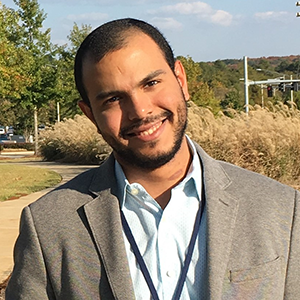

With the ever-accelerating computerization process of once strictly mechanical systems, information security threats are only expected to increase. This rapidly unfolding process calls into question whether we could promptly cope with the security threats it entails. Unfortunately, a commonly observed trend is for the computerization process to steadily advance while paying little attention to the security aspect until a security vulnerability is discovered, often by an external actor. Only then, a quest for a suitable security measure begins. In sum, security is considered only in reaction to manifest breaches. This comes at a high price, as the fix is not often found speedily after the breach. In this talk, I will explain how to take a proactive vulnerability identification and defense construction approach to better secure cyber-physical systems. I will discuss two main themes of my research: 1) vulnerability identification and 2) defense construction with a focus on the context of Controller Area Network (CAN) systems. About the speaker: Dr. Khaled Serag is a post-doctoral research assistant at Purdue University. He finished his Ph.D. at Purdue in August 2023. His broad research area is Information Security. Since he joined Purdue, he has been working closely with Dr. Dongyan Xu and Dr. Z. Berkay Celik on several Automotive and ICS Security projects. He also has industrial research experience through working with Boeing as a Cyber Security Researcher, where he was involved in several security research projects pertaining to avionic networks, mesh networks, IoT devices, and other areas.
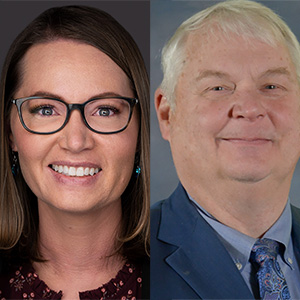

This is a hybrid event. Students are encouraged to attend in person: STEW G52(Suite 050B)As the commercial and international space community grows to reach the projected $1T for the global economy, the vast domain of space becomes increasingly congested and contested. In this Seminar the Space Information Sharing and Analysis Center (Space ISAC) and the National Cybersecurity Center (NCC) team up to share their perspectives and insights on the intersection of cyber and space, how the game is changing, and what effect this will have on government, industry and academia. This talk will discuss the technology trends in the industry, threats to space systems, and make recommendations to students and faculty about how to navigate the landscape of space domain cybersecurity over the next five years. About the speaker: Mr. Scott Sage is the Chief Operating Officer of the National Cybersecurity Center, a national-level nonprofit organization that provides collaborative cybersecurity knowledge and services to the United States. He encourages, engages, and equips others to solve worthwhile hard problems like his most recent assignment to develop a new space cybersecurity market for Peraton Inc. He also recently developed a complicated IR sensor development from a blank sheet of paper to launch and operation in under 24 months, and his prior conception and execution of an Insider Threat and Information Warfare Behavior Based Analytics R&D project that generated 2 patents and increased interest from DoD and Intelligence Community customers. Past accomplishments include: · Automated Mission Impact Assessment of Network Disruptions - Patent 8347145 · Concept to Low Earth Orbit IR Sensor for Space Development Agency < 2 years · Northrop Grumman Sector Cyber and Information Operations Strategy Development · Industry-leading technology development for scalability in satellite C2 automation · Increased worldwide frequency access for Low Earth Orbit satellite communications · House Armed Services Committee praise for highly classified space advocacy plan · Conceptualized, researched and constructed unique DoD Space Order of Battle Annex · Highly praised Master of Science thesis addressing satellite radiation effects Before devoting his work full time to visionary growth development for Peraton, Scott managed counter- hypersonics development for Northrop Grumman, advanced cyber defense systems development for AT&T, and advanced space operations programs for aerospace companies and the US Navy. Scott has published international export material on cybersecurity issues associated with virtualization and cloud computing and developed a nation-wide R&D network for Northrop Grumman that allowed critical technologies to be brought online for use on high priority captures worth over $8.6B in future revenue. Scott has also been a Certified Information Systems Security Professional (CISSP) and Homeland Security Expert since going to work after completing 15 years of US Navy service as a Commander. Scott volunteered as the co-chair of the Space ISAC Information Sharing Working Group and co-chair for the DHS CISA Future of Space Working Group and has volunteered at Penrose hospital and the Colorado Springs Rescue Mission, along with being a leader at his church. Formal degrees include a M.S., Space Systems Electrical Engineering from the Naval Postgraduate School in Monterey, B.S., Nuclear Engineering & B.A., Journalism & Mass Communication from Iowa State University, Ames, IA. Ms. Erin M. Miller is the Executive Director of the Space Information Sharing and Analysis Center (Space ISAC). Space ISAC serves as the primary focal point for the global space industry for "all threats and all hazards." Stood up at the direction of the White House in 2019, Erin led the Space ISAC to open its operational Watch Center, alongside its Cyber Malware and Analysis Vulnerability Laboratory in Colorado Springs, CO, USA. Under Erin's leadership, Space ISAC's headquarters facility is already serving several countries to achieve its mission of security and resilience for the global space industry. Each year Space ISAC puts on the Value of Space Summit (VOSS), co-hosted with The Aerospace Corporation at the University of Colorado Colorado Springs. Erin has over a decade of experience building meaningful tech collaborations and has formed hundreds of formal partnerships between government, industry and academia to solve problems for war fighters and national security. As a serial entrepreneur in the non-profit space, she thrives in launching new programs and new organizations from stand up through building and scaling operations. Erin was the Managing Director of the Center for Technology, Research and Commercialization(C-TRAC) and brought three USAF-funded programs to bear at the Catalyst Campus for Technology & Innovation (www.catalystcampus.org). Her expertise in brokering unique partnerships using non-FAR type agreements led to the standup of the Air Force's first cyber focused (#securebydesign) design studio,AFCyberWorx at the USAF Academy, and the first space accelerator, Catalyst Accelerator, at Catalyst Campus in Colorado Springs - in partnership with Air Force Research Laboratory and AFWERX. In 2020 Erin was a recipient of the Woman of Influence award. In 2018 Erin was recognized by the Mayor of Colorado Springs as Mayor's Young Leader (MYL) of the Year Award for Technology. She is also the recipient of Southern Colorado Women's Chamber of Commerce Award for Young Female Leader in 2018. In her previous roles she developed and managed intellectual property portfolios, technology transfer strategies, export control/ITAR, secure facilities, and rapid prototyping collaborations. Erin serves on the advisory board of CyberSatGov, CyberLEO and is a board member for the Colorado Springs Chamber of Commerce & EDC. She has guest lectured at Georgetown University, United States Air Force Academy, University of Colorado at Boulder, and Johns Hopkins University. She is frequently found public speaking at notable events like, Defense Security Institute's Summits, CyberSatGov, State of the Space Industrial Base, and other forum focused on security and space resiliency and critical infrastructure.
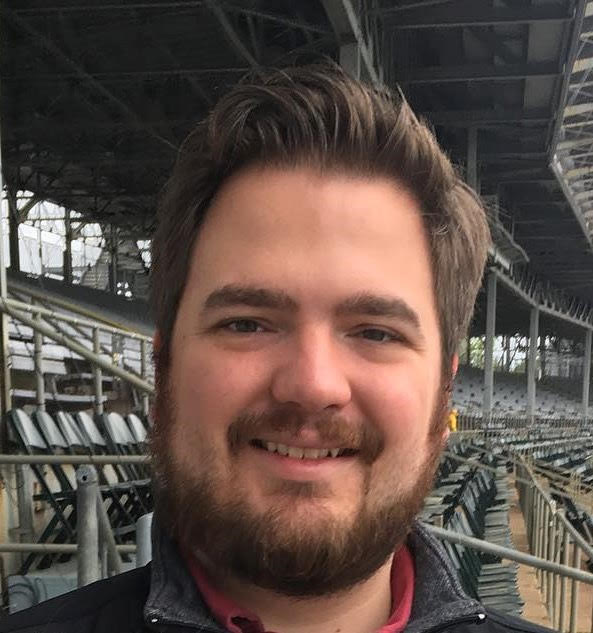

Recorded: 09/20/2023 CERIAS Security Seminar at Purdue University Enhancing Software Supply Chain Security in Distributed Systems Christopher Nuland, Red Hat In the aftermath of the transformative 2020Solarwinds breach, securing software supply chains has surged to the forefront of modern software development concerns. This incident underscored the imperative for innovative approaches to ensure software artifacts' integrity and authenticity. The Supply Chain Level for Software Artifacts (SLSA)framework emerged as a response, emphasizing secure software development processes for supply chains. As compliance standards, notably enforced by the National Institute of Standards and Technology (NIST), intensify the call for robust security measures, the convergence of open-source technologies presents a compelling solution.In the contemporary landscape of distributed systems, like Kubernetes, the significance of signing critical artifacts, such as container images and builds, cannot be overstated. These signatures substantiate the origin and unaltered state of the artifacts, rendering them resistant to tampering or unauthorized access. Yet, with the escalating complexity of software supply chains, bolstered by the proliferation of distributed technologies, ensuring trustworthy artifact provenance becomes more formidable.This challenge is where SigStore, an innovative technology solution, steps in. SigStore enables cryptographic signing and verification of software artifacts, offering a robust mechanism to establish the authenticity of these components. By leveraging transparency log technologies, SigStore enhances the trustworthiness of the supply chain,creating a formidable barrier against malicious alterations.This talk will discuss the popular technologies in the industry that are utilizing a zero trust software supply chain. Why this type of supply chain is important, and outline the different technologies used in conjunction with SigStore to create zero-trust supply chains within the software development and deployment lifecycle.Christopher Nuland has been involved with container technology since 2010, when he worked with Oak Ridge Labs and Purdue's CdmHub on containerizing their simulations with OpenVZ. He joined RedHat in 2018 as a container specialist in the infrastructure and application development space for primarily Fortune 100 companies across the U.S. His work has focused mainly on cloud-native migrations into k8s-based platforms, and developing secure cloud-native zero-trust supply chains for the healthcare,life sciences, and defense sectors. About the speaker: Christopher Nuland has been involved with container technology since 2010, when he worked with Oak Ridge Labs and Purdue's CdmHub on containerizing their simulations with OpenVZ. He joined RedHat in 2018 as a container specialist in the infrastructure and application development space for primarily Fortune 100 companies across the U.S. His work has focused mainly on cloud-native migrations into k8s-based platforms, and developing secure cloud-native zero-trust supply chains for the healthcare,life sciences, and defense sectors.


As privacy moves from a predominantly compliance-oriented approach to one that is risk-based, privacy risk modeling has taken on increased importance. While a variety of innovative pre-existing options are available for privacy consequences and a few for vulnerabilities, privacy threat models, particularly ones focused on attacks (as opposed to threat actors) remain relatively scarce. To address this gap and facilitate more sophisticated privacy risk management of increasingly complex systems, MITRE has developed the Pattern and Action Nomenclature Of Privacy Threats In Context (PANOPTIC™). By providing an empirically-driven taxonomy of privacy threat activities and actions – as well as contextual elements – to support environmental and system-specific threat modeling, PANOPTIC is intended to do for privacy practitioners what MITRE ATT&CK® has done for security practitioners. This presentation discusses the underpinnings and provides an overview of PANOPTIC and its use. About the speaker: Stuart S. Shapiro is a Principal Cyber Security and Privacy Engineer and a co-leader of the Privacy Capability in the MITRE Labs Cyber Solutions Innovation Center at the MITRE Corporation. At MITRE he has led multiple research and operational efforts in the areas of privacy engineering, privacy risk management, and privacy enhancing technologies (PETs), including projects focused on connected vehicles and on de-identification. He has also held academic positions and has taught courses on the history, politics, and ethics of information and communication technologies. His professional affiliations include the International Association of Privacy Professionals (IAPP) and the Association for Computing Machinery (ACM).


Problem: Cyber threat information is rarely codified and never connected to actual infrastructure that needs cyber protections since infrastructure is also not codified.Solution: Infrastructure Expression (IX) – Five use cases for the IX tools with methods using graph theoretics and machine learning will be presented. A full scenario on recent malware binary analysis will be presented highlighting applicability to infrastructure, creation of context specific indicators, cyber observables, and courses of actions for better cyber defenses. Background: The Idaho National Laboratory (INL) has been creating tools, methods and cyber defense capabilities using Structured Threat Information Expression (STIX) and graph database technology since 2015. INL's internal Laboratory Directed Research and Development (LDRD) project – IX - created the first codified infrastructure models in STIX. INL has open sourced these tools and uses advanced graph and machine learning methods and techniques to support critical infrastructure cyber defenses for many USG sponsors and stakeholders. About the speaker: Rita Foster is recognized nationally for research leadership in control system cyber security, briefing numerous committees in the United States Senate and House, appointed by cabinet level secretaries to serve on advisory councils and is frequently requested to provide analysis on emerging threats and impacts to critical infrastructure. She currently leads the innovation development for the infrastructure security areas: identifying research gaps that align to our agile and resilient strategies, creating partnerships, building proposals, and analyzing risk components for cyber-physical infrastructure security. These partnerships include asset owner utilities, technology providers, DOE, DHS, DOD and other government entities. Her efforts resulted in research proposals awarded ranging from creation of automated response mitigating cyber threats, applying machine learning to firmware and malware binary code, impact analysis with physics-based modeling, asset owner consumable threat analysis and characterizations of vulnerabilities and exploits in various control systems and components. She has over 33 years of experience in computer integration focusing on control systems applications, real-time simulations and for critical life safety related applications.Her current role at INL includes over 18 years of experience in cyber security of critical infrastructure identifying research gaps aligned with strategic direction, creating partnerships,providing capstone analysis, and thought leadership in areas of protection and defense in the energy sector. She has mentored over 50 interns ranging from high schoolers to Ph.D. candidates using her project data and tools for dissertations. She provides outreach and education to a wide range of stakeholders and has participated in numerous exercises to identify gaps in roles and responsibilities between private industry and government. She has managed multi-discipline teams bringing together controls system engineers, network engineers, cyber security researchers and subject matter experts for infrastructure security. She has served as the technical lead providing initial direction and requirements for programs essential to INL's success. Her early career at INL included over 15 years of experience in independent verification and validation of large military networks for performance and security, validating of physics-based code for nuclear repositories, programming real time training simulators for nuclear operations, programming life safety systems for nuclear repositories, validated energy transmission and distribution systems and integrated divergent control systems creating supervisory control and data acquisition platforms. Prior to INL, she obtained over 8 years of experience in computer operations,programming, and data networking.
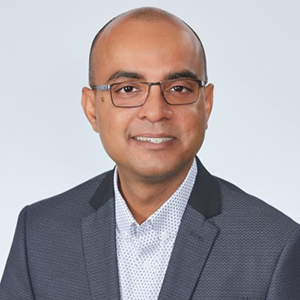

Software Supply Chain is emerging as one of the biggest issues that enterprises are facing these days. SolarWinds, Kaseya, 3CX, the examples are way too many. These attacks rapidly multiplied in 2022.In this presentation, we will discuss the trending of software supply chain issues, the federal mandates in the form of executive orders that are impacting this space, emerging best practices and what is the fundamental tech stack to manage these issues, and lastly, what does a good supply chain security program looks like.Dr. Singh will also briefly discuss his journey from being a student at Purdue (MS, Computer Science) to his current role as Chief Information Security Officer of Alkami Technology. About the speaker: Anand is a seasoned cybersecurity executive with over 25 years of experience managing technology, security, privacy, and risk teams in a variety of verticals. His career spans Financial Services, Retail, Healthcare, Manufacturing, eCommerce, Cloud, and SaaS companies. These include UnitedHealth Group, Target Corporation, Alkami Technology, Caliber Home Loans, and PTC.He is currently the Chief Information Security Officer (CISO) at Alkami Technology. Alkami's solutions enable financial institutions to outsmart the competition by providing the nation's best Cloud, SaaS, and PI centric digital banking platform. Alkami's mission is to be the gold standard in digital banking. More than 400 FIs and 15 million end users use Alkami's solutions. Anand is also a seasoned Board director with tenures at DaVinci Academy, CISO XC, and Dallas CISO Summit. Anand holds NACD.DC, CISM, and CISSP certifications. He has a PhD in Computer Science from University of Minnesota, MS in Computer Science from Purdue University, and B.Tech. in Computer Science and Engineering from Indian Institute of Technology. Anand is a proud boilermaker and is deeply attached to Purdue's mission and its goals.


Human identity recognition is one of the key mechanisms of ensuring proper asset and information access to individuals. It became an established authentication practice for government, consumer, financial and recreational institutions in modern society. Biometrics are also increasingly used in a cybersecurity context to mitigate vulnerabilities and to ensure protection against an unauthorized access. However, with the rise of the technological advancements, such as AI and deep learning, more and more capabilities exist to infer private information of individuals and to use aggregate data mining for commercial or other purposes. This lecture will discuss how deep learning methods can enhance biometric recognition accuracy in a variety of settings: unimodal and multi-modal systems, social behavioral biometrics, and risk assessment. The lecture will further focus on risks of privacy and ethical considerations, with discussing cancellability and de-identification as two of the mechanisms to mitigate the privacy concerns. About the speaker: Prof. Gavrilova holds Full Professor with Tenure appointment at the Department of Computer Science, University of Calgary, Canada. Prof. Gavrilova research interests lie in the areas of machine intelligence, biometric recognition, image processing and GIS. Prof. Gavrilova publication list includes over 150 journal and conference papers, edited special issues, books and book chapters, including World Scientific Bestseller of the Month (2007) – "Image Pattern Recognition: Synthesis and Analysis in Biometric," Springer book (2009) "Computational Intelligence: A Geometry-Based Approach" and IGI book (2013) "Multimodal Biometrics and Intelligent Image Processing for Security Systems". She has received support from CFI, NSERC, GEOIDE, MITACS, PIMS, Alberta Ingenuity, NATO and other funding agencies. She is an Editor-in-Chief of Transactions on Computational Sciences Springer Verlag Journal series and on Editorial board of seven journals.


The roots of software piracy were propelled by the fledgling game market of the 1980's where the PC game supply chains were brittle and copying floppy disks was really easy. This talk will walk through the history and evolution anti-cracking controls as video games moved from bedroom game development to a 220 billion dollar industry. About the speaker: Kelly FitzGerald is an Product Security Architect at the RTX CODE Center where she focuses on factory and supply chain cybersecurity and threat intelligence. Kelly comes to RTX after 15 years at Symantec/Veritas where she worked in Product Security Vulnerability Management while doing research in medical device vulnerabilities. Kelly lives with her husband, kind golden retriever and sassy black cat in San Diego, CA. In her spare time she creates bad art, manipulates the memory of single player games and watches way too much educational YouTube.
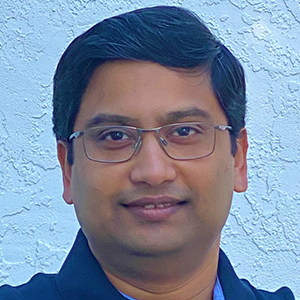

Information Flow Tracking (IFT) is a useful tool to reason about security of a system. It can be applied at different levels of abstraction - starting from operating system all the way to gate-level circuits through various representations of software and hardware. In this talk, we will focus on IFT at the register transfer level (RTL) representation of hardware and discuss how IFT can be applied to find various types of RTL security vulnerabilities. We will discuss an inductive formulation of the problem based on leakage alert and propagation alert that offers a scalable solution and micro-architecture-level design insights compared to more traditional formulations. We will end the talk by outlining some of the research challenges that we need to address to push the boundary further. About the speaker: Dr. Sayak Ray is a Security Researcher at Intel Corporation. His area of research includes tools and automation for security validation, security challenges in FPGA, heterogeneous computing and data center networking. Dr. Ray regularly publishes at design automation conferences and journals. He has served on technical program committees of various conferences such as DAC and ICCAD. Before joining Intel in 2016, he was a Post-doctoral Research Associate at Princeton University. Dr. Ray obtained his PhD from UC Berkeley in 2013.


"What Do We Owe One Another In Cybersecurity?" As the cybersecurity ecosystem evolves, we understand more about how interconnected we are: the ripple effects from breaches, the fact that supply chains aren't discrete lines but rather a web, and that mapping our vulnerabilities is harder than we thought. In this session, Wendy Nather will talk about the concept of civic duty on the Internet — not just sporadic charity efforts or "nice to have" information sharing, but the social norms and obligations we should face together if we want a sustainable world of technology. Shared risk requires shared defense. About the speaker: Wendy Nather leads the Advisory CISO team at Cisco. She was previously the Research Director at the Retail ISAC, and Research Director of the Information Security Practice at 451 Research. Wendy led IT security for the EMEA region of the investment banking division of Swiss Bank Corporation (now UBS), and served as CISO of the Texas Education Agency. She was inducted into the Infosecurity Europe Hall of Fame in 2021. Wendy serves on the advisory board for Sightline Security. She is a Senior Fellow at the Atlantic Council's Cyber Statecraft Initiative, as well as a Senior Cybersecurity Fellow at the Robert Strauss Center for International Security and Law at the University of Texas at Austin.
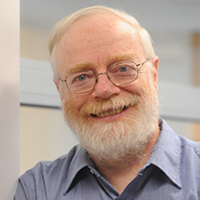

For 35 years, the Internet has been bedeviled by attackers. For about as long, defenders have tried deploying various defenses; these have often been of limited utility. We look back at what has happened, focusing on the explicit or (more often) implicit assumptions behind the defenses, and why these assumptions were or were not correct. About the speaker: Steven M. Bellovin is the Percy K. and Vida L. W. Hudson Professor of Computer Science at Columbia University, member of the Cybersecurity and Privacy Center of the university's Data Science Institute, and an affiliate faculty member at Columbia Law School. Bellovin does research on security and privacy and on related public policy issues. In his copious spare professional time, he does some work on the history of cryptography. He joined the faculty in 2005 after many years at Bell Labs and AT&T Labs Research, where he was an AT&T Fellow. He received a BA degree from Columbia University, and an MS and PhD in Computer Science from the University of North Carolina at Chapel Hill. While a graduate student, he helped create Netnews; for this, he and the other perpetrators were given the 1995 Usenix Lifetime Achievement Award (The Flame). He has also received the 2007 NIST/NSA National Computer Systems Security Award and has been elected to the Cybersecurity Hall of Fame. Bellovin has served as Chief Technologist of the Federal Trade Commission and as the Technology Scholar at the Privacy and Civil Liberties Oversight Board. He is a member of the National Academy of Engineering and has served on the Computer Science and Telecommunications Board of the National Academies of Sciences, Engineering, and Medicine. In the past, he has been a member of the Department of Homeland Security's Science and Technology Advisory Committee, and the Technical Guidelines Development Committee of the Election Assistance Commission.Bellovin is the author of Thinking Security and the co-author of Firewalls and Internet Security: Repelling the Wily Hacker, and holds a number of patents on cryptographic and network protocols. He has served on many National Research Council study committees, including those on information systems trustworthiness, the privacy implications of authentication technologies, and cybersecurity research needs; he was also a member of the information technology subcommittee of an NRC study group on science versus terrorism. He was a member of the Internet Architecture Board from 1996-2002; he was co-director of the Security Area of the IETF from 2002 through 2004.More details may be found at http://www.cs.columbia.edu/~smb/informal-bio.html.


Endpoint security controls have traditionally relied on detecting malicious activity to protect devices from intrusions. But attackers often change their techniques so quickly that detection patterns must be adapted, resulting in a detection lag. Some of this limitation can be solved by using hardware-based process isolation, which isolates risky endpoint tasks from the user's data and critical parts of the operating system. One of the most interesting data sources the HP Threat Research team uses to track malware trends and behaviors are isolation traces, since they can give us an insight into techniques that have bypassed detection controls. In this presentation, we provide an overview of captured attack techniques that are currently seen in the wild. We will elaborate how attackers try to bypass email security and how users are lured to infected websites to download malware. Finally, we will share advice on how to protect against such attacks and what to look out for. About the speaker: Patrick is a malware analyst at HP with interests in a wide range of security areas. He already focused on cyber security during his studies, where he developed a particular interest in malware analysis. After graduation, he worked on a scientific project at the university and built a dynamic malware analysis system for code similarity clustering. He gained further experience in incident response and threat intelligence at a Swiss bank. Since 2021, Patrick works as a malware analayst on HP's Threat Research team. He conducts analyses of new threats, using the results to improve HP's security products and shares them with the community.
